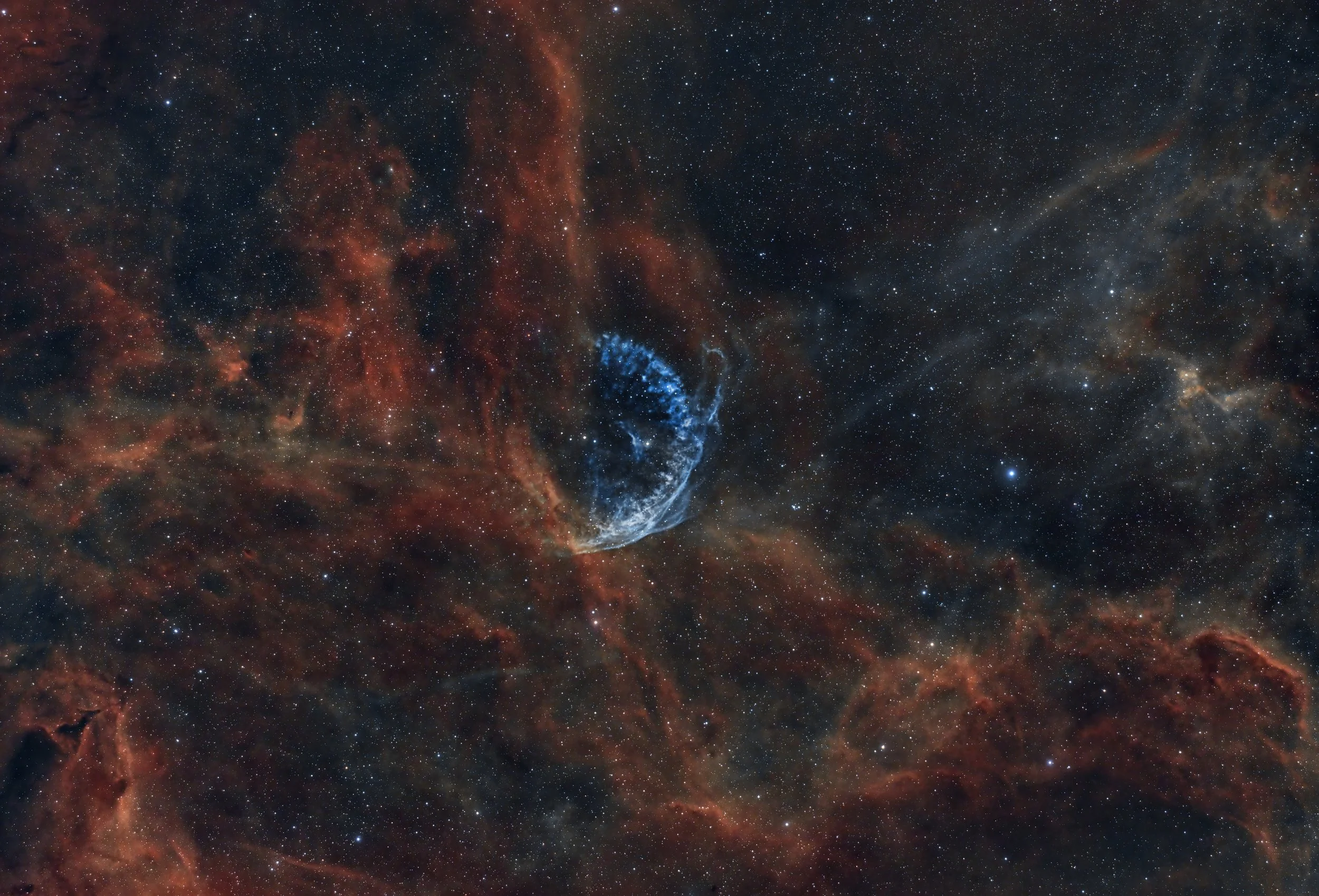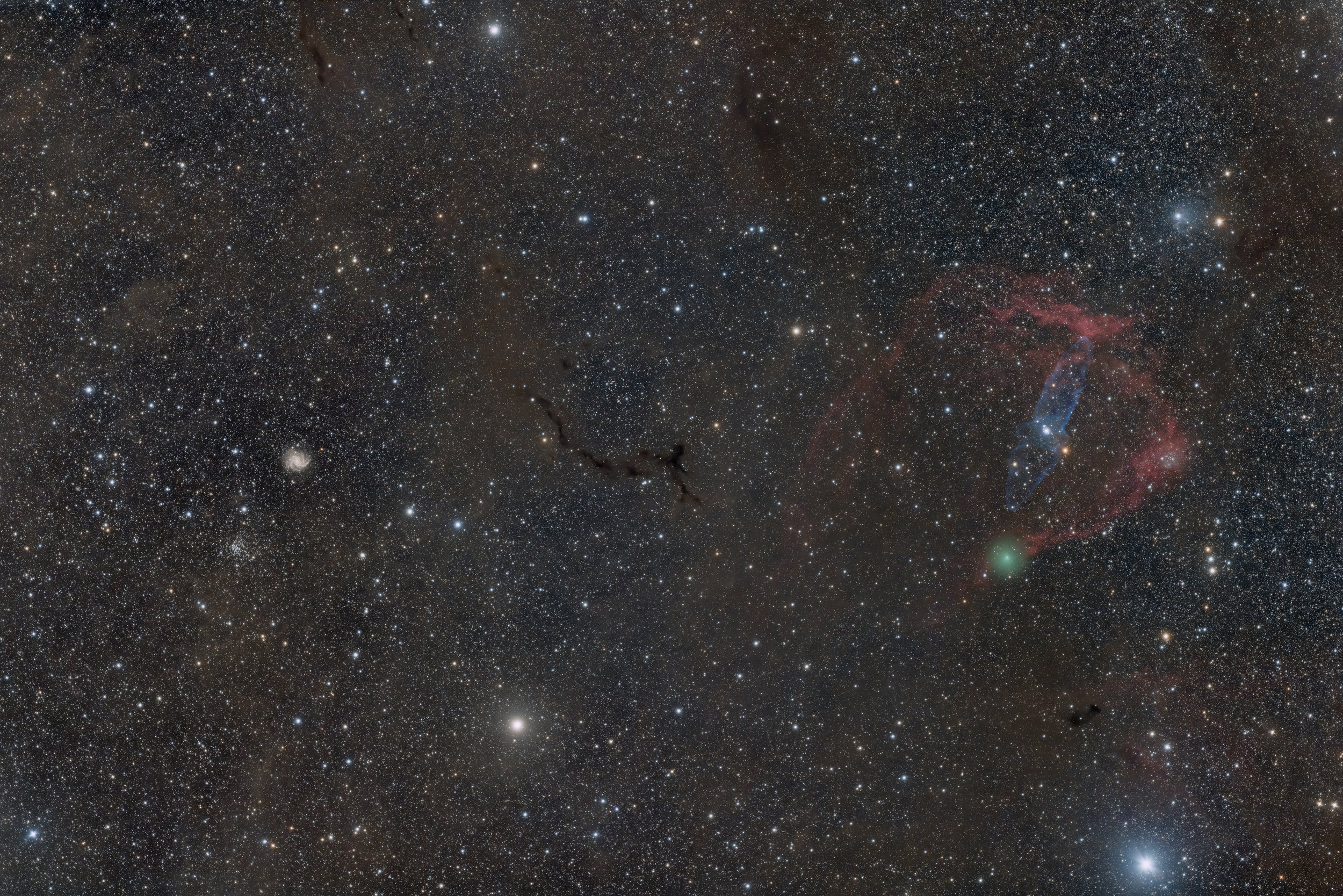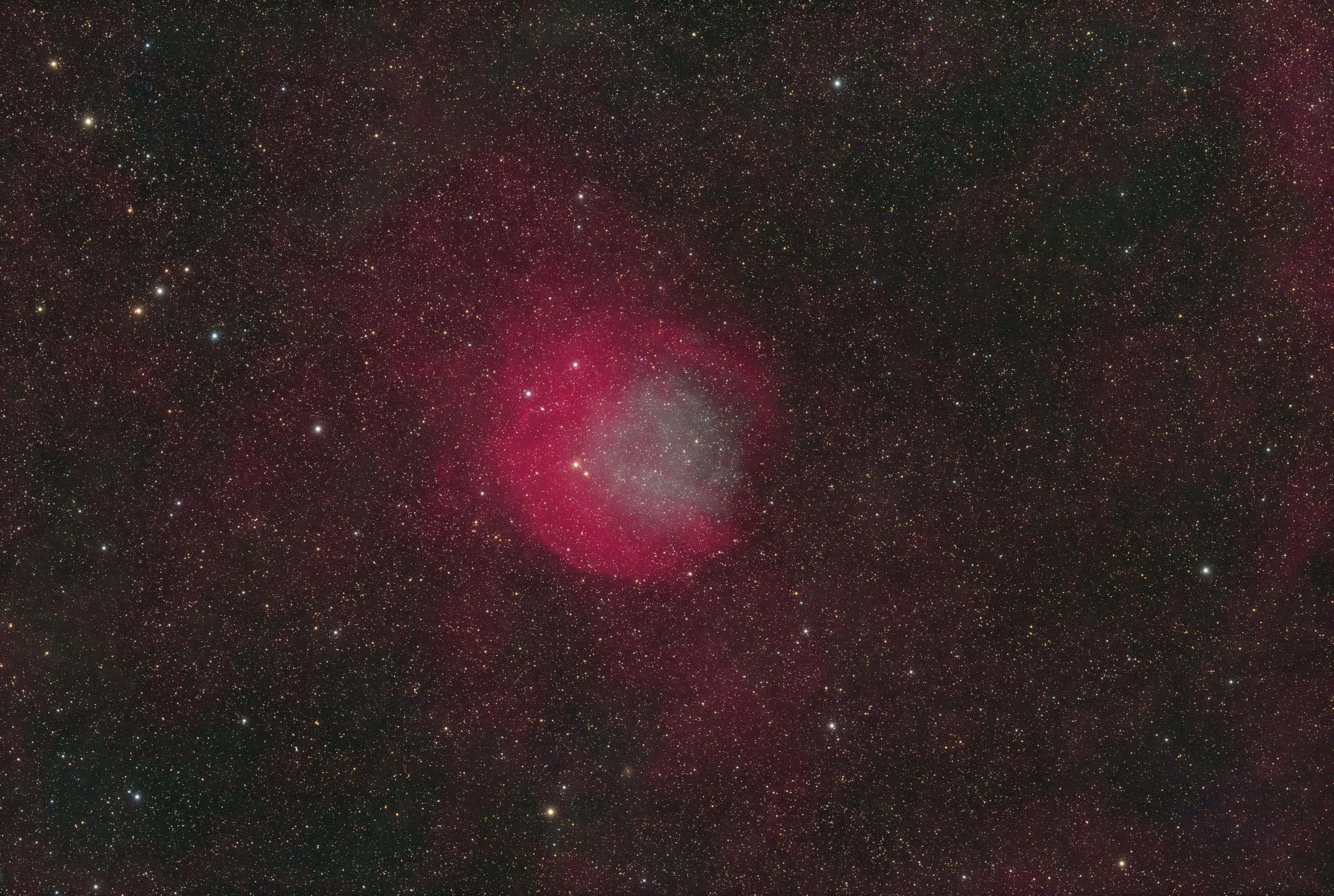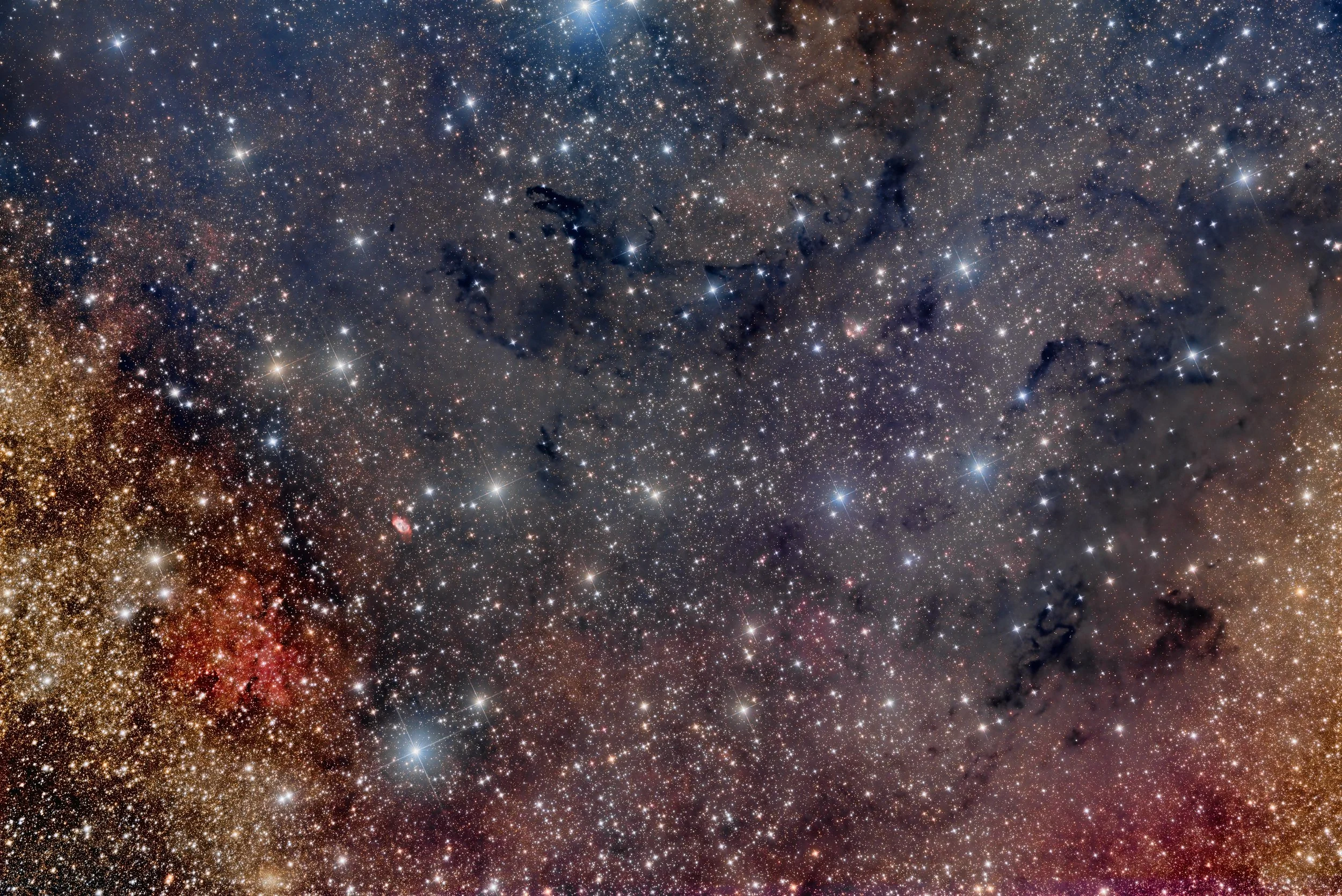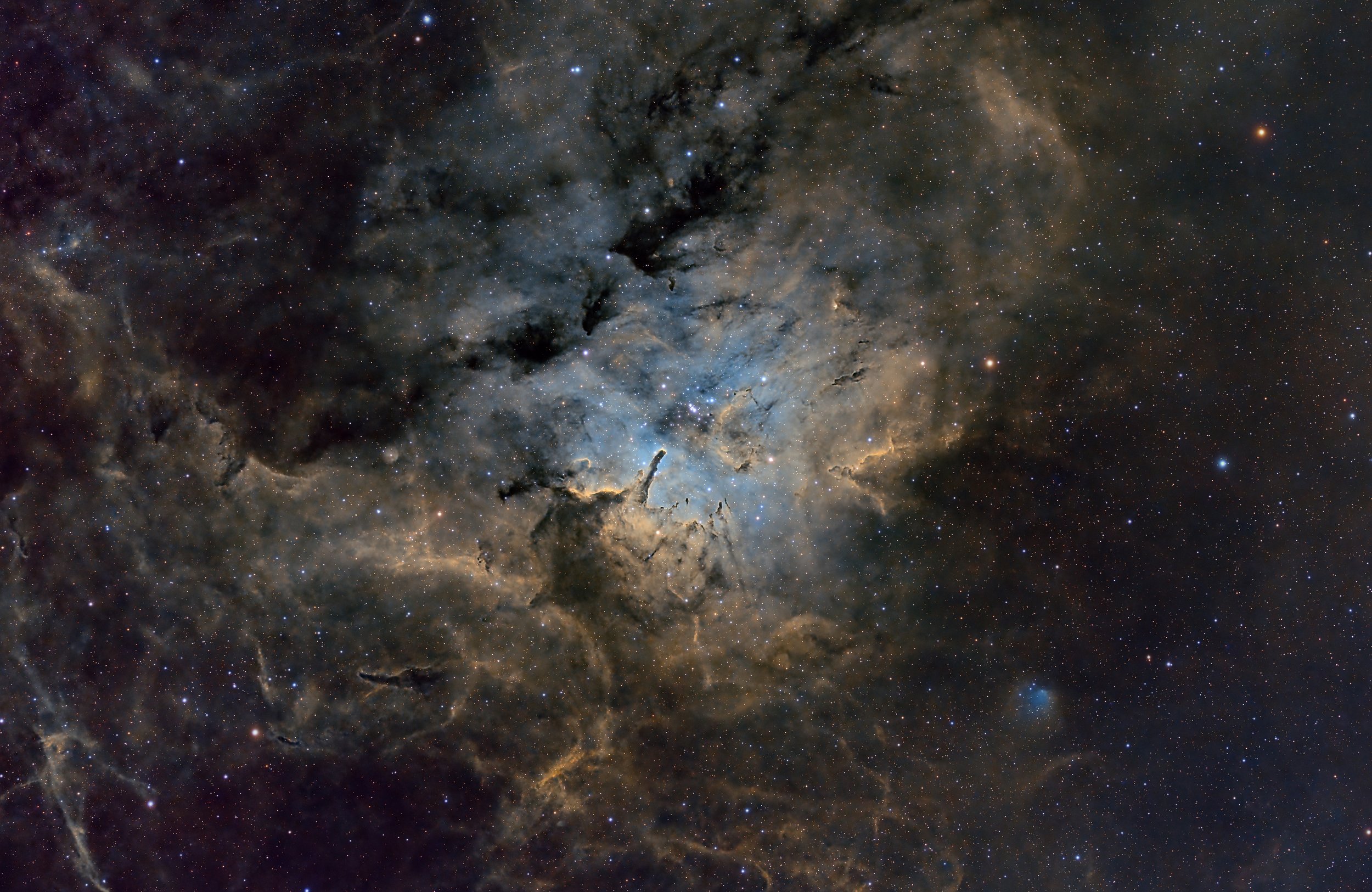
AAPOD2 Image Archives
Saturn over the last 6 years (2018-2023)
The excellent seeing of August 29th 2023 allowed me to produce a Saturn image of sufficient quality to add to my montage of images over the ringed planet over the last few years. This made number six (2018 to 2023)
The Little Rosette Nebula
Image Description and Details : Little Rosette Nebula or the "Question Mark Point", 4 nights of captures from the "Anysllum" observatory with my colleague Xavi Bros.
Astronomik 6nm Ha: 9h 50'
Astronomik 6nm OIII: 6h 50'
Astronomik 6nm SII: 1h 20'
Total: 18h
Equipment Details: - Orion Optics 14"
- Losmandy Titan
- ZWO ASI2600MM Pro
Copyright: Jaume Zapata & Xavi Bros
Seahorse nebula (Barnard 150)
Image Description and Details : Location:
Al Salmi desert, Kuwait (Bortle 5).
Acquisition
L 62 x 300” (5hr 10min)
R 20 x 300” (1hr 40min)
G 20 x 300” (1hr 40min)
B 20 x 300” (1hr 40min)
Ha 14 x 300” (1hr 10min)
Total integration time 11hr 20min
Gears:
C: ASI294MM Pro
M: AM5
T: RC51
F: ZWO
Copyright: Ahmed Alqallaf
Prominences
Image Description and Details : In a single day, more than 6 large prominences, solar cycle number 25 continues to give us a fabulous spectacle, under 110 degrees Fahrenheit, this work took more than 6 hours, just to be capturing data, of our beautiful sun, plus the hours of image processing. from Dallas, Texas.
Equipment Details: Lunt 100mm,Lunt 60mm
Copyright: Arturo Buenrostro
THE Super Blue & Mineral Moon
A so-called ‘Mineral Moon’ image is a saturated color image of the Moon’s surface which indicates the presence of certain minerals in the lunar soil. So, the cooler differences correspond to the variations in chemical composition of the lunar surface (mostly by variations in iron and titanium content). Blue areas contain high amounts of titanium, whereas brown/orange areas indicate an abundance of iron and iron oxide. As some of the craters have unusually dense concentrations of titanium, it is assumed that asteroids that impact on the Moon are rich in rare metals.
India’s Spacecraft Chandrayaan 3 landed on Moon on 23 August which is finding water & minerals.
WR 134
WR 134, a captivating member of the Wolf-Rayet star family, stands as a beacon of stellar grandeur in the cosmos. This massive and luminous star has shed its outer layers, creating a stellar wind that rushes into space, sculpting intricate patterns in the surrounding interstellar medium. Its fierce radiance and powerful emissions reveal the profound evolutionary processes occurring within its core.
Supernova Remnant - Sh2-96
Sh2-96, a lesser-known gem in the night sky, is an emission nebula that emanates a subtle yet mesmerizing glow. Nestled amidst the tapestry of stars, it remains hidden from casual view, inviting dedicated observers to uncover its secrets. Within its gossamer threads of gas and dust, stars are being born, their radiant energy sculpting the surrounding nebulous material. Like a cosmic cradle, Sh2-96 nurtures the formation of celestial offspring, unseen by many but holding the promise of new stellar wonders yet to be unveiled.
COCOON NEBULA (IC5146) AND RIVER DUST
Nestled within the constellation Cygnus, the Cocoon Nebula, also known as IC 5146, unveils a realm of star formation and transformation. This cosmic cocoon is a blend of dark interstellar dust and the incandescent glow of young stars, enshrouded in a veil of gas and dust that masks their brilliance. The nebula's captivating form evokes the image of a nascent butterfly taking shape, as hidden stellar embryos prepare to burst forth and illuminate their surroundings. The Cocoon Nebula, showcases the cosmic metamorphosis that underpins the creation of new stars, reminding us of the ever-changing and dynamic nature of the universe.
IC 1311 and Patchick6
IC 1311 and Patchick 6 together grace the night sky with their ethereal presence. IC 1311, a diffuse nebula, shimmers like a cosmic canvas painted with the hues of hydrogen gas, a stellar nursery where new suns come to life. In contrast, Patchick 6, a distant open cluster, dazzles like a jewelry box filled with stars, each one telling a story of its place in the vast expanse. As we observe these celestial companions, we glimpse into the intricate tapestry of the universe, where celestial entities intertwine and create a spectacle that stirs wonder in the hearts of observers.
A bat, a seahorse and a squid meeting a comet (C/2023 E1 Atlas)
Originating from the outer fringes of the solar system, Comet C/2023 E1 (Atlas) embarks on a cosmic journey along a profoundly elliptical path. As it makes its way around our Sun, a luminous coma and occasionally a trailing tail materialize, crafting an enchanting visual spectacle that captivates terrestrial observers. The comet's capricious orbital behavior defies easy prognostication of its luminosity and characteristics, introducing an element of unpredicted allure to its study. In this particular capture, the comet finds itself in the company of a celestial seahorse, SH2-129, and the Bat Nebula, forming an uncommon and intriguing field of view that undoubtedly sparks fascination.
Quest for Cosmos
Hyperbolic star trails, a creative and artistic photography technique, involve capturing star trails that take on a hyperbolic shape due to the movement of the camera or lens during exposure. By introducing controlled camera motion, photographers can produce visually striking and unconventional star trail patterns that deviate from the traditional circular or arc-like trails. This technique adds a dynamic and abstract element to astrophotography, allowing for a blend of science and artistic expression in capturing the motion of celestial bodies.
NGC 6888 Crescent
NGC 6888, known as the "Crescent Nebula," is an emission nebula located in the constellation Cygnus. It's formed by the powerful stellar wind from a Wolf-Rayet star colliding with the surrounding interstellar material, creating its distinctive crescent shape. A fascinating aspect of this nebula is the presence of intricate, filamentary structures illuminated by the energetic radiation emitted by the central star, resulting in a captivating interplay of light and gas.
Ngc 4565
NGC 4565, often referred to as the "Needle Galaxy," is a remarkable edge-on spiral galaxy situated in the constellation Coma Berenices. One of its lesser-known facts is that it hosts a dense central bulge, which contains a supermassive black hole that emits powerful X-rays as it interacts with surrounding matter. This galaxy is also famous for its prominent dust lane that spans its length, expertly made visible in this image, partially obscuring the galactic disk and adding to its distinctive appearance.
Abell 61 Planetary Nebula
Abell 61 is a planetary nebula situated in the constellation Cygnus. As a remnant of a dying star's outer layers, it showcases a spherical shell of ionized gas, illuminated by the central white dwarf star. The intricate structures within the nebula are a testament to the star's final stages of evolution. Abell 61's presence in the night sky allows astronomers to delve into the complex processes that occur during a star's demise, providing insights into the universe's continuous cycle of creation and transformation.
SH2-71 & SH2-72, dark nebula and IFNs Wide field
SH2-71 and SH2-72 are distinct emission nebulae found in the Milky Way's Sagittarius arm. SH2-71, also known as Gum 48, resides in Scutum and houses a cluster of young, hot stars that energize the surrounding gas, resulting in intricate structures shaped by their interplay. SH2-72, the Omega Nebula or Messier 17, in Sagittarius, showcases its iconic "omega" shape and serves as a fertile ground for star formation, revealing insights into the processes governing the birth of stars and their interaction with their cosmic surroundings.
M27 in HOO 100% view
M27, also known as the Dumbbell Nebula, is a planetary nebula situated in the constellation Vulpecula. This stunning celestial object is the result of a dying star's outer layers being expelled into space, forming a distinctive dumbbell shape. The central white dwarf star illuminates the surrounding gas, creating a breathtaking display of intricate structures and vivid colors. As one of the brightest planetary nebulae visible from Earth, M27 provides astronomers with a valuable opportunity to study the final stages of stellar evolution, shedding light on the destiny of stars like our Sun and the complex processes that shape the cosmos.
Cocoon Nebula
The Cocoon Nebula, designated as IC 5146, is a star-forming region residing in the constellation Cygnus. It's characterized by a dark cloud of interstellar dust and gas, which obscures background stars, and illuminated regions where new stars are emerging. The nebula's ethereal appearance resembles a cocoon, giving rise to its name. The young, hot stars within the nebula emit radiation that energizes the surrounding gas, causing it to glow. This interplay of dark and illuminated regions, combined with ongoing star formation, makes the Cocoon Nebula a fascinating laboratory for studying the birth and evolution of stars and the intricate interstellar environment in which they form.
Sh2-86 and NGC6823
NGC 6823 is an open star cluster located in the constellation Vulpecula, surrounded by the intricate Sh2-86 emission nebula. This stellar nursery is populated with young, hot stars born from the same massive molecular cloud. These stars illuminate their surroundings, carving out captivating nebulous structures and actively shaping the region's dynamic landscape. NGC 6823 and its accompanying Sh2-86 nebula provide astronomers with a unique window into the complexities of star formation, evolution, and their intricate relationship with the cosmic environment, enhancing our understanding of the continuous cycle of creation and transformation in the universe.






